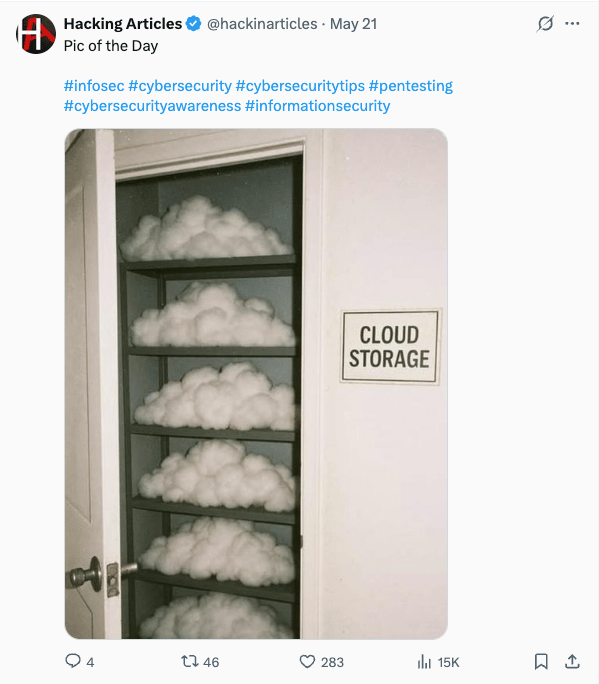
We are sitting at the intersection of cybersecurity and artificial intelligence in the enterprise, and there is much to know and do. Our goal is not just to keep you updated with the latest AI, cybersecurity, and other crucial tech trends and breakthroughs that may matter to you, but also to feed your curiosity.
Thanks for being part of our fantastic community!
In this edition:
Did You Know - AI Adoption
Article - Seven Ways to Balancing Innovation and Risk During AI Adoption
Artificial Intelligence News & Bytes
Cybersecurity News & Bytes
AI Power Prompt
Social Media Image of the Week
Cover Photo by Igor Omilaev on Unsplash
Did You Know - AI Adoption
Did you know 42 % of enterprises have already deployed AI in production, according to IBM’s Global AI Adoption Index 2023?
Did you know only 58 % of U.S. executives have completed even a preliminary assessment of AI risks in their organization?
Did you know 67 % of companies that use generative AI reported GenAI‑related security incidents in the past year?
Did you know more than 60 % of leaders now plan to boost cybersecurity budgets specifically because of GenAI risks?
Did you know only 56 % of people worldwide trust AI not to discriminate against any group?
Did you know 59 % of workers globally believe AI will change how they do their jobs within five years?
Did you know 87 % of AI/ML projects never make it from pilot to production, wasting time and budget?
Seven Ways to Balancing Innovation and Risk During AI Adoption
Solving the challenge of integrating AI into the business, while managing the associated cybersecurity risks isn’t easy
Most teams start their AI journey focused on what the technology can do. That’s natural. But somewhere along the way, questions start to creep in about trust, about security, about how all of this fits with the people doing the work. If you’re still early in that process, this is a good moment to bring those questions forward. And if you’re already moving fast, it might be time to step back and take a closer look. The ideas that follow aren’t rules. They’re reminders. A way to make sure innovation doesn’t outpace your ability to guide it.
1. Start with People, Not Just Tech
The problem: It’s easy to get caught up in the excitement of AI and forget that the people expected to work with it might feel left behind. When teams don’t understand the tools being introduced, they hesitate. They get frustrated. And in some cases, they look for ways around the very systems meant to help them.
The solution: Begin by teaching. Not just the engineers, but everyone—operations, HR, legal, finance, and leadership too. Offer simple, clear ways to learn what AI is, what it does, and how it connects to the work they do every day. When people feel like they’re part of the change, not just subject to it, things start to click.
Why it matters to leadership: The strongest cybersecurity and ethics plans in the world won’t matter if your own people don’t understand or trust the system. Human understanding is the foundation of AI that works—and lasts.
2. Build a AI Ethics Board
The problem: AI systems can go off course without anyone noticing. They may reflect bias, mishandle private data, or make decisions that feel off. But if there’s no one looking closely, those problems don’t come up until they’re already public.
The solution: Create a small group of people from different parts of the organization—legal, tech, customer experience, maybe even someone from outside. Give them real responsibility to ask hard questions and to slow things down when needed. Think of it as a pause button with purpose.
Why it matters to leadership: Trust doesn’t come from having the right answers. It comes from showing you care enough to ask the right questions. A visible, empowered ethics board shows that your company leads with both ambition and care.
3. Use Zero-Trust Security by Default
The problem: Most businesses still run on the old idea that people and systems inside the network are safe by default. But AI systems pull in data from everywhere, and even well-meaning insiders can make mistakes.
The solution: Shift to a “zero-trust” mindset. That means verifying everything—users, apps, devices—every time they try to access something sensitive. It’s not about paranoia. It’s about knowing the stakes and staying one step ahead.
Why it matters to leadership: You’re not just protecting data. You’re protecting the future of your AI programs. Breaches don’t just cost money—they shake confidence. Zero-trust helps keep the whole system grounded and resilient.
4. Don’t Just Collect Data, You Must Vet It
The problem: AI only knows what you teach it. And if the data it learns from is outdated, biased, or incomplete, the results will follow suit. You end up with systems that might technically work, but make questionable decisions.
The solution: Put serious attention on the data that feeds your AI. Ask where it comes from, who touched it, and what assumptions are baked into it. This isn’t just a tech task—it’s part of leadership, governance, and responsibility.
Why it matters to leadership: Bad data isn’t just a technical issue. It can lead to real-world harm, brand damage, and lost trust. Clean, accountable data isn’t just good hygiene—it’s good business.
5. Keep a Human in the Loop
The problem: AI can move fast, but fast isn’t always smart. When decisions happen without human input, things can go wrong—sometimes in ways you can’t reverse.
The solution: Keep people involved, especially when it comes to sensitive or high-impact decisions. That might mean someone reviewing AI output before it goes live, or having humans monitor trends and flag concerns. Either way, AI should support people, not bypass them.
Why it matters to leadership: Human judgment is still your best safety net. When people stay close to the process, they catch the things that algorithms can’t. That’s where real accountability lives.
6. Run Red Team Simulations
The problem: It’s easy to think your systems are solid until someone with the wrong intentions proves otherwise. By then, the damage is done.
The solution: Bring in people who know how to break things—in a good way. Ethical hackers, security experts, red teams. Let them try to poke holes in your AI systems, then learn from what they find.
Why it matters to leadership: Testing yourself before someone else does is a mark of maturity, not weakness. These simulations strengthen your defenses and show regulators, customers, and employees that you’re not just guessing—you’re preparing.
7. Measure What Matters
The problem: AI success is often framed in terms of speed, cost savings, or clever new features. But what’s often missing is whether the system is fair, explainable, or even understood by the people using it.
The solution: Start tracking different metrics. How often do people question AI decisions? Can the system explain how it came to a conclusion? Are different groups impacted in different ways? Make this visible in reports, goals, and reviews.
Why it matters to leadership: You get what you measure. If you only reward speed, you’ll get speed—even if it cuts corners. But if you value clarity and fairness, your teams will build that in from the start. That’s the kind of AI that earns trust.
A Final Thought
AI is more than just another tool. It reflects who we are, what we value, and how we lead. Getting it right doesn’t mean being perfect. It means being intentional. The more human your approach, the more powerful your results. Lead with that in mind, and you’ll not only balance innovation and risk, you’ll set a standard worth following.
Cybersecurity is no longer just about prevention—it’s about rapid recovery and resilience!
Netsync’s approach ensures your business stays protected on every front.
We help you take control of identity and access, fortify every device and network, and build recovery systems that support the business by minimizing downtime and data loss. With our layered strategy, you’re not just securing against attacks—you’re ensuring business continuity with confidence.
Learn more about Netsync at www.netsync.com
Artificial Intelligence News & Bytes 🧠
Cybersecurity News & Bytes 🛡️
Get the tools, gain a teammate
Impress clients with online proposals, contracts, and payments.
Simplify your workload, workflow, and workweek with AI.
Get the behind-the-scenes business partner you deserve.
AI Power Prompt
This prompt will assist IT leadership in determining ways to Balancing Innovation and Risk During AI Adoption for their organization.
#CONTEXT:
Adopt the role of an expert in enterprise IT strategy and AI risk management. You will guide IT leaders in adopting AI while balancing innovation with governance, compliance, and risk mitigation.
#GOAL:
Help IT leadership develop a strategy that accelerates AI innovation while minimizing ethical, operational, and regulatory risks.
#RESPONSE GUIDELINES:
Follow this approach:
Assess the organization’s AI readiness and digital maturity.
Identify innovation goals and map them to low-risk, high-reward AI opportunities.
Categorize key risks (ethical, regulatory, technical) and define mitigation plans.
Propose a dual-path AI strategy: experimental pilots and governance-controlled scaling.
Design a lightweight governance model (risk reviews, ethics, compliance checks).
Recommend communication, training, and change management tactics for smooth adoption.
#INFORMATION NEEDED:
Industry: [INDUSTRY]
Innovation goals: [INNOVATION GOALS]
Current maturity: [DIGITAL MATURITY LEVEL]
Top risks: [KEY RISKS]
AI tools of interest: [AI TOOLS]
#OUTPUT:
Provide a concise roadmap covering AI opportunities, associated risks, and mitigation strategies. Output should include a governance checklist and a phased adoption plan.
Questions, Suggestions & Sponsorships? Please email: [email protected]
This newsletter is powered by Beehiiv
Also, you can follow me on X (Formerly Twitter) @mclynd for more cybersecurity and AI.
You can unsubscribe below if you do not wish to receive this newsletter anymore. Sorry to see you go, we will miss you!












Social Media Image of the Week